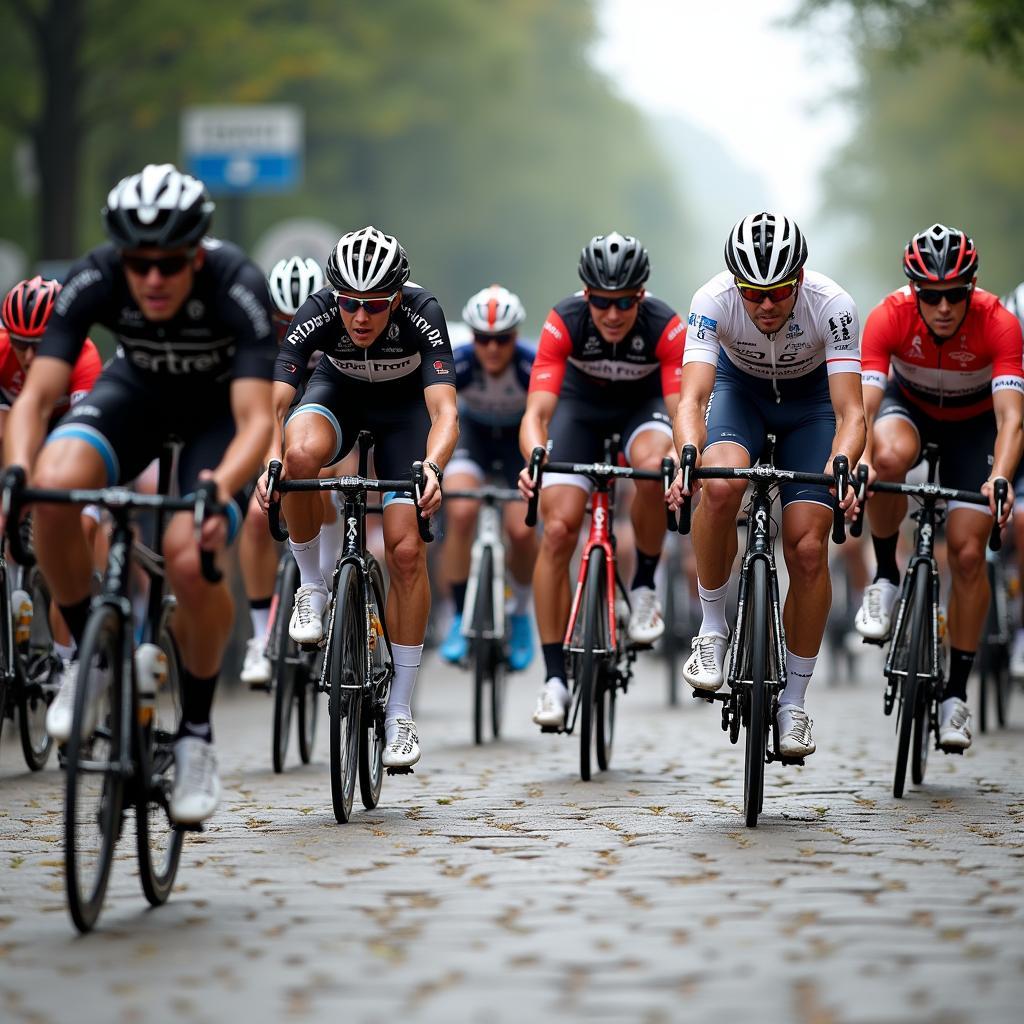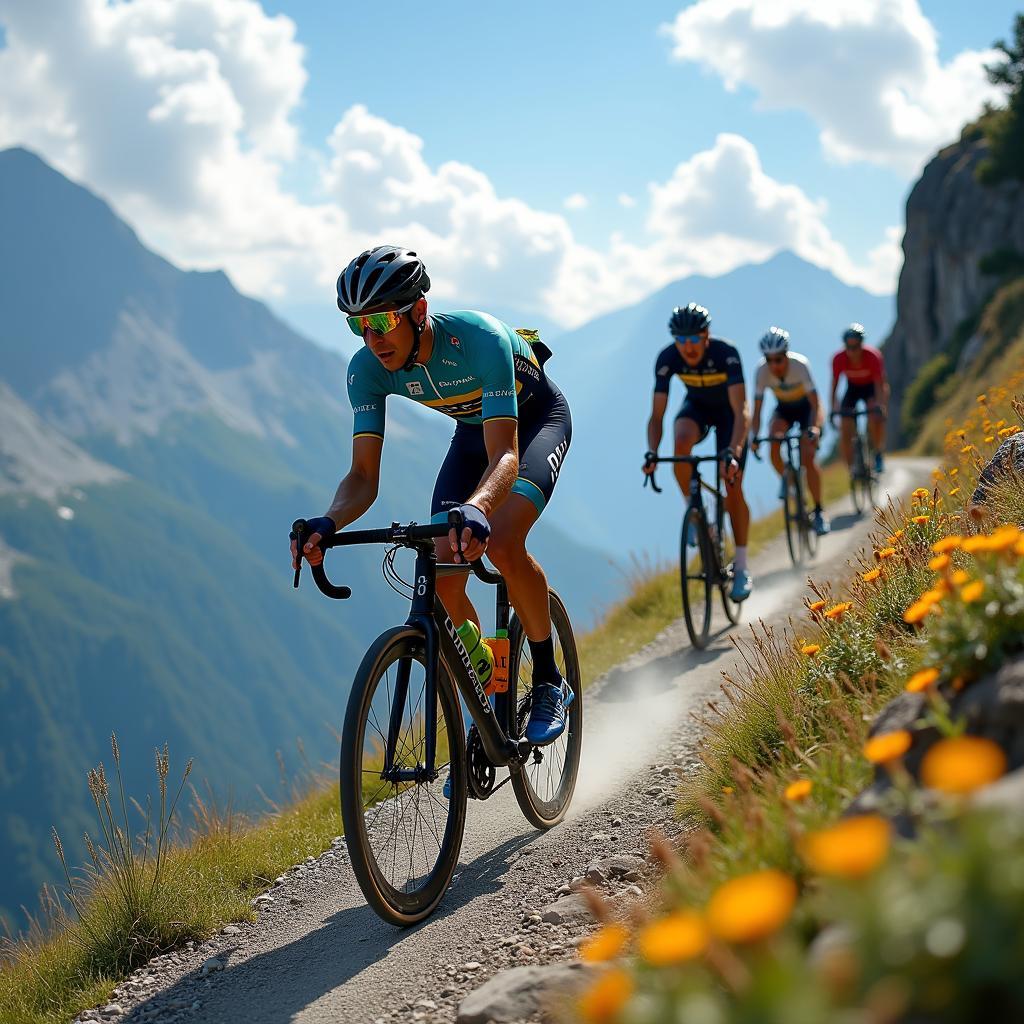The 2014 Tour de France route offered a thrilling and challenging course for the cyclists, traversing diverse landscapes and iconic locations. From the cobbled roads of northern France to the demanding climbs of the Alps and Pyrenees, this edition captivated audiences worldwide with its dramatic moments and unexpected turns. Let’s journey back to relive the highlights and explore the remarkable terrain that defined the 2014 Tour de France route.
Navigating the Northern Cobbles and British Countryside
The 2014 Tour commenced in Leeds, England, marking the second Grand Départ held in the United Kingdom. The opening stages showcased the beauty of the Yorkshire countryside before crossing the Channel to France. Stage five brought a significant challenge: the cobbled sectors of Paris-Roubaix. These treacherous stretches of pavé tested the riders’ skill and resilience, causing crashes and reshaping the general classification.
What made the cobbled stages so challenging? The uneven surface and unpredictable nature of the cobbles demand exceptional bike handling skills and increase the risk of punctures.
 Cyclists navigating the treacherous cobbles of stage 5
Cyclists navigating the treacherous cobbles of stage 5
Conquering the Peaks of the Alps
The Alps loomed large in the middle stages of the race, presenting formidable climbs that would determine the overall winner. Iconic ascents like the Col d’Izoard and the Alpe d’Huez pushed the cyclists to their limits, testing their strength, endurance, and tactical prowess. Vincenzo Nibali’s impressive performance in the mountains solidified his position as a strong contender for the yellow jersey.
How did the altitude affect the riders? The thinner air at high altitudes reduces the amount of oxygen available, making breathing and sustained effort more difficult.
 Vincenzo Nibali attacking on a steep alpine climb
Vincenzo Nibali attacking on a steep alpine climb
Facing the Fury of the Pyrenees
Following the Alps, the Pyrenees presented a final hurdle for the weary riders. Steep gradients and unpredictable weather conditions made for challenging racing, with opportunities for ambitious riders to gain time or lose ground. Stage 18, featuring the Hautacam climb, provided a thrilling spectacle with dramatic attacks and shifting positions in the peloton.
What were the key differences between the Alps and Pyrenees stages? The Pyrenees tend to have shorter, steeper climbs compared to the longer, more gradual ascents of the Alps, demanding a different kind of effort from the riders.
The Final Sprint to Paris
After three weeks of intense racing, the surviving riders made their way to Paris for the traditional finish on the Champs-Élysées. The final stage typically ends in a bunch sprint, offering a chance for the sprinters to claim victory. While the overall winner is usually determined in the mountains, the final stage provides a celebratory conclusion to the grueling race.
Vincenzo Nibali ultimately emerged victorious, securing his place in cycling history as the winner of the 2014 Tour de France. His strong performance in the mountains and consistent riding throughout the race earned him the coveted yellow jersey.
Remembering the 2014 Tour de France route evokes memories of thrilling races, breathtaking scenery, and unforgettable moments. From the cobbled roads to the majestic mountains, this edition showcased the unique challenges and rewards of cycling’s grandest stage.
FAQ
- Who won the 2014 Tour de France? Vincenzo Nibali.
- Where did the 2014 Tour de France start? Leeds, England.
- What were some of the key climbs in the 2014 Tour? Col d’Izoard, Alpe d’Huez, and Hautacam.
- What made the cobbled stages so challenging? Uneven surface and increased risk of punctures.
- How did the altitude affect the riders in the mountains? Reduced oxygen levels made breathing and sustained effort more difficult.
- What was the final stage of the 2014 Tour de France? The traditional finish on the Champs-Élysées in Paris.
- What was unique about the 2014 Tour de France route? It started in the UK and included challenging cobbled sectors.
Need support? Contact us at Phone: 0373298888, Email: SEO.backlink@gmail.com Or visit our office at 86 Cau Giay, Hanoi. We have a 24/7 customer service team.
For more information about past Tour de France winners, you can visit our page dedicated to the 2014 tour de france winner. You might also be interested in our other articles about cycling and the Tour de France.